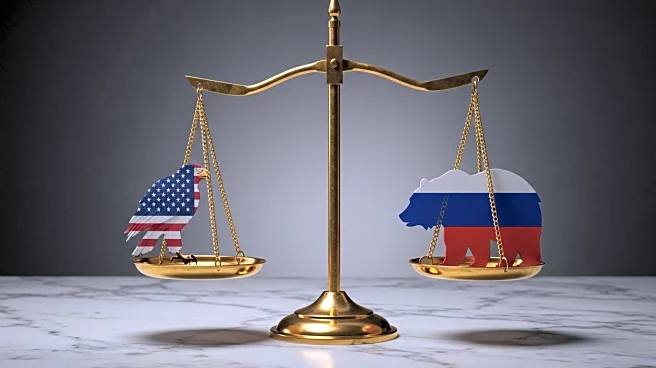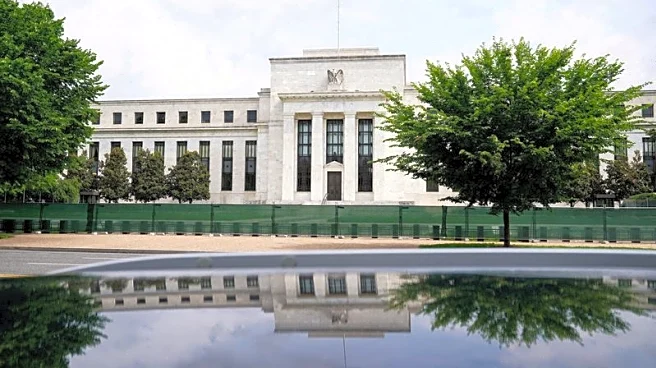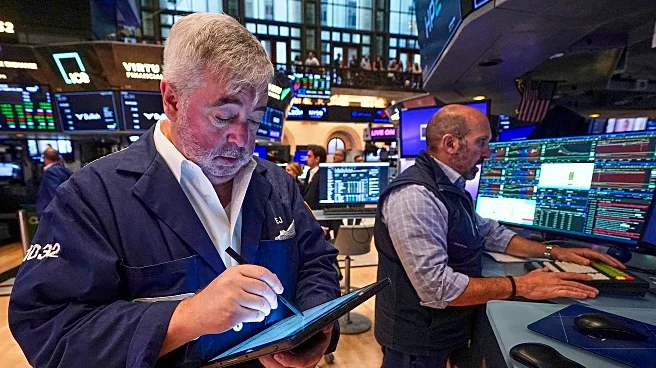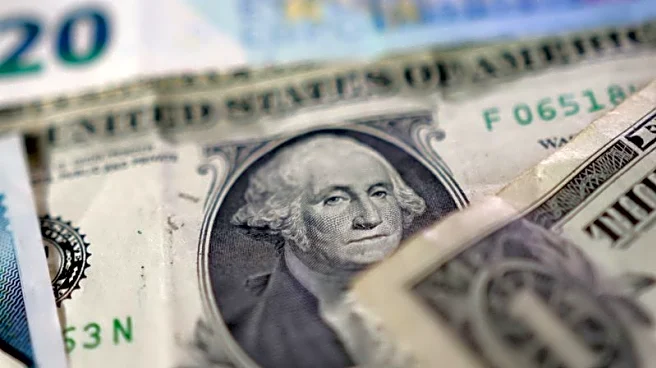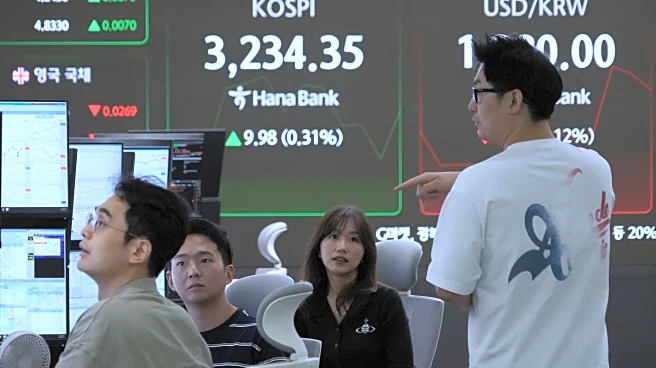What's Happening?
The U.S. dollar experienced a decline on Friday as investors remained cautious about the rate outlook ahead of import price data. Recent figures have suggested that inflation could accelerate in the coming months, influencing market sentiment. The yen outperformed other currencies following strong Japanese growth data, which showed resilience against new U.S. tariffs. A meeting between President Trump and Russian President Vladimir Putin is scheduled in Alaska, focusing on a potential ceasefire deal in Ukraine. The U.S. import price figures are under scrutiny after a sharp jump in producer prices last month, which had previously pushed the dollar higher. Money markets are reflecting a 95% chance of a 25-basis point Federal Reserve rate cut in September, with a 5% chance of a larger cut. The upcoming Jackson Hole symposium is anticipated to provide further insights into the Fed's next move.
Why It's Important?
The dollar's movement is significant as it reflects investor sentiment regarding inflation and potential Federal Reserve actions. Rising import prices could indicate that U.S. companies are absorbing tariffs, which may lead to increased consumer prices and inflation. The Trump-Putin meeting is crucial as it could impact geopolitical relations and economic stability, particularly in Europe. A ceasefire in Ukraine could benefit the euro more than the dollar, affecting currency markets. The Fed's rate decisions are pivotal for economic stakeholders, influencing borrowing costs and investment strategies. The yen's strength highlights Japan's economic resilience, which could affect trade dynamics with the U.S.
What's Next?
Investors are closely watching the Trump-Putin meeting for any developments regarding the Ukraine conflict. The Jackson Hole symposium next week is expected to provide further clarity on the Fed's rate cut trajectory. Market participants will also monitor U.S. labor market data and inflation trends, which could present challenges for the Fed's policy decisions. The dollar's risk premium and hedging strategies may evolve based on geopolitical and economic developments.
